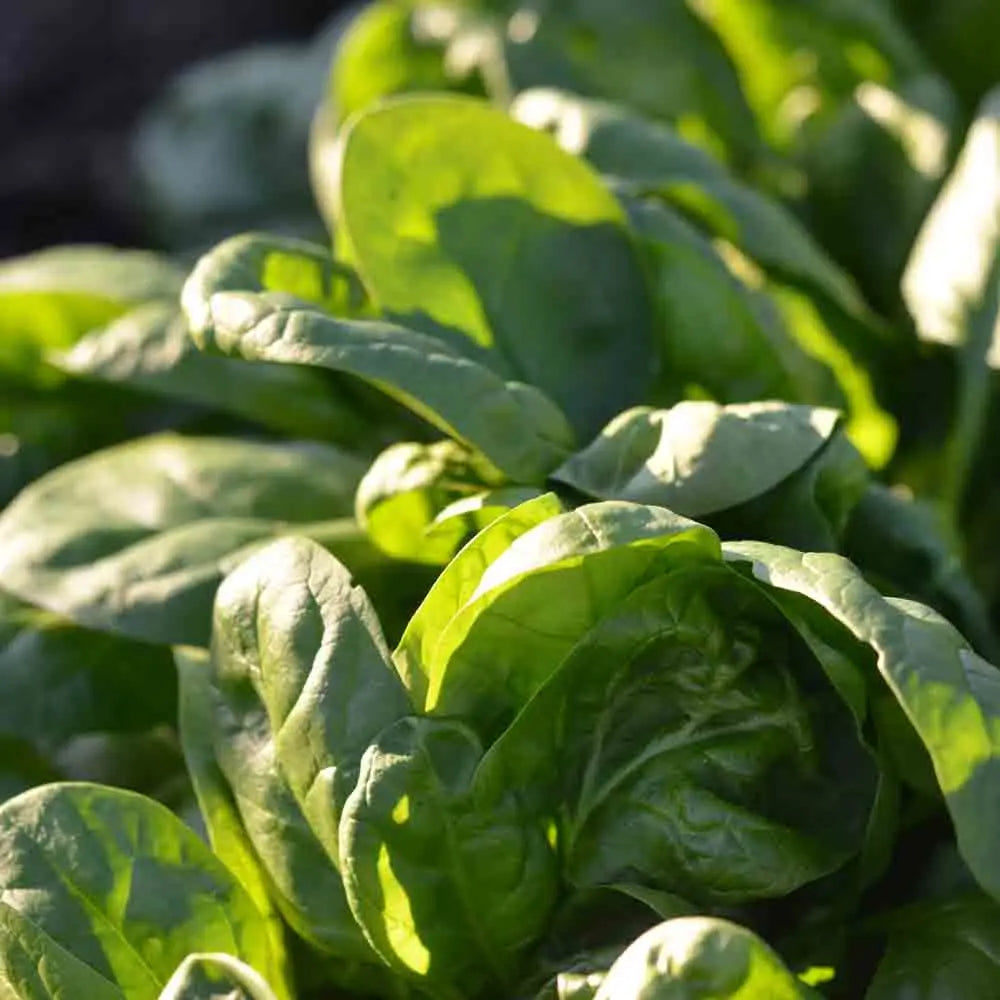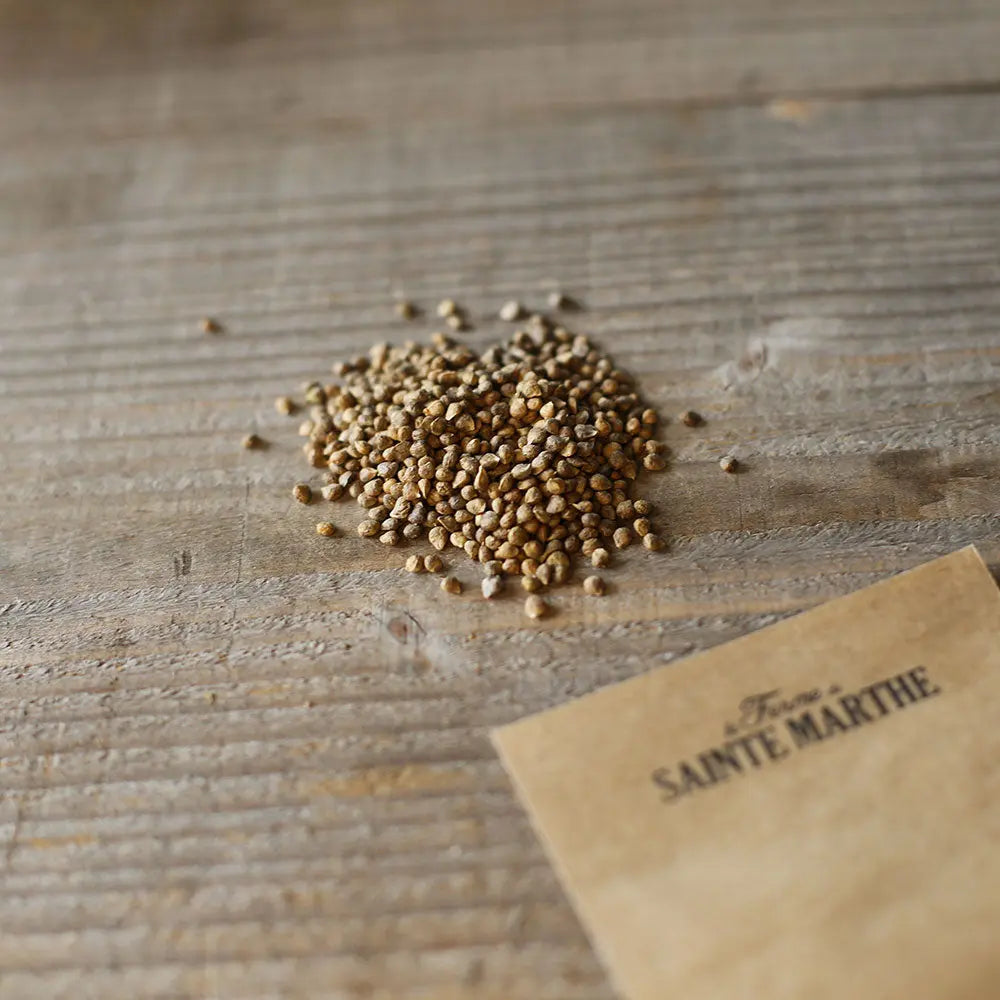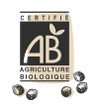EPINARD AMERICA AB
Spinacia oleracea
American Spinach is a variety with deep green, bubble-shaped leaves. It's possible to sow it twice, meaning two harvests a year! A remineralizing green vegetable rich in vitamins, it's a valuable food in winter when green vegetables are scarce.
Successful Spinach Sowing
- Sowing: light in March-April or August-September, in sunny (autumn/winter) or shaded (summer) exposure, in fresh soil, previously loosened with a broadfork, in rows spaced 25 to 30 cm apart.
- Sow 2 or 3 cm deep, then firm down with the back of a rake and water.
- You can cover the seed with a forcing fleece until emergence.
- Thin to 10 cm, then weed between the rows and mulch to avoid weed competition.
- Frequent watering if the soil is dry to prevent the seeds from going to seed.
- Be careful of the heat which can cause the seeds to rise quickly.
Good Associations
Spinach likes to grow near peas, broad beans, haricot beans, cabbage, celery, strawberries, lettuce or chicory.
Harvesting Winter Spinach
Harvest approximately 2 months after sowing. Frequent picking encourages the appearance of new leaves.
Preserving Spinach
Spinach doesn't keep well fresh for long. You can freeze it.
The Enemies
Snails or slugs : Place slug traps around your crops.
Downy mildew : Do not treat with Bordeaux mixture, as spinach leaves cannot tolerate copper and such treatment would be fatal. Take preventative action.
Leaf-eating moths : These insects cause large punctures or bites during the night. Use a biological treatment based on Bacillus thuringiensis .









